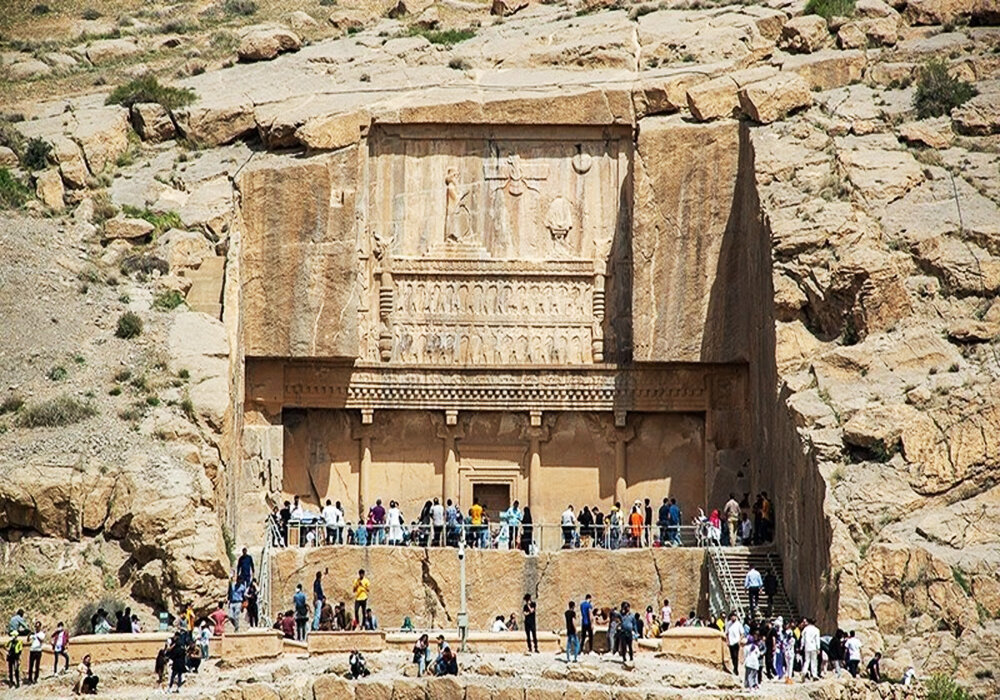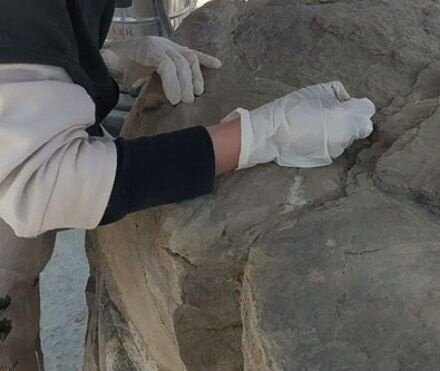Persepolis director underscores fight against lichens

TEHRAN - Research and field investigation for combating lichens is still underway on the stones in Persepolis, a celebrated World Heritage site in southern Iran, the World Heritage site’s director said on Sunday.
“Moreover, documentation of the location of the lichens is ongoing,” Alireza Askari-Chaverdi said.
“Lichens are one of the most damaging factors to historical buildings, especially stone monuments. The operation of cleaning lichen in Persepolis is carried out in workshop format by a team of conservation and restoration experts and continues to this day.”
Referring to news circulating on social media under the title “Persepolis infested with lichens,” Askari-Chaverdi stated: Lichens are one of the most damaging factors to historical buildings, especially stone monuments. This problem is less prevalent in Iran and much more prevalent in stone structures in European countries, especially Italy.
The expert stated that lichens come in many different types, adding:" According to biologists, lichens are formed by a close association of fungi and algae. In this symbiosis, algae produce organic materials through photosynthesis, consumed by fungi, and on the other hand, fungi dissolve mineral materials in the stone through acid secretion, consumed by algae.
He continued: Although not all experts agree with this theory, all experts, including cultural heritage specialists and biologists, believe that lichen growth can damage stones.
“Due to the diversity of lichens, a definitive and uniform treatment has not yet been presented. Different countries propose different solutions for their cleaning, and although some appropriate methods have been used, there are also criticisms of them.”
In the past, experimental conservators used water and brush to clean lichens, which is the easiest method but has many disadvantages, including the spread of lichens, not removing the roots of lichens, and the emergence of new types of lichens, he explained.
Askari-Chaverdi stated that laboratories in Persepolis have been conducting extensive studies on the types and methods of lichen cleaning for the past 17 years in collaboration with international and Iranian specialized centers and these studies are still ongoing.
He emphasized that it can be said that Persepolis was the first Iranian site where lichens were subjected to specialized examinations and the first place where scientific treatment of lichens was conducted, and a significant number of these damaging factors have been removed from the surface of stone artifacts.
In 2001, only a part of the site was experimented on by Iranian-Italian conservation and archaeology teams, and in this project, Iranian experts and experts from the University of Bologna and some other institutions participated, he said.

“After positive results from the use of a type of lichen remover were obtained, in 2019, two palaces at Persepolis were cleaned of lichens and stone artifacts were restored by borderless conservators in collaboration with Iranian experts.”
He noted that an Iranian-Italian archaeological and conservation team conducted experiments on one of the undecorated walls at Persepolis to be re-examined after several years. The important point is that lichen cleaning and its growth are very complex, and to see the results of cleaning, a multi-year period is required.
“For example, lichen removal materials may have been found useful in Italy, but may not be suitable in Iran due to the type of lichen, the type of stone, and the suitable climatic conditions. Therefore, drug use cannot be done without continuous and specialized studies. For this reason, experts and the management of Persepolis use any lichen removal material based on its useful records in Persepolis.”
Furthermore, Askari-Chaverdi emphasized that usually lichen cleaning should be accompanied by protective and restoration measures, and it is necessary to define a conservation workshop for each section for protective and restoration measures to be taken after lichen cleaning; otherwise, lichen cleaning may not only be positive but also harmful to historical artifacts.
He underlined the existence of lichens and fungi on stone artifacts is not a new or strange subject and said: Wherever there is stone, there is likely to be lichen. This issue has been the subject of research and practical actions during the history of the conservation and restoration of the Persepolis collection and practical and effective measures have been taken.”
“During the past two years, monitoring of lichen removal operations with new methods of lichen control has been carried out by conservation experts on site. Despite the benefits of this method, it cannot be considered the definitive way to save inscriptions and artifacts in order to remain safe from destruction caused by lichens.”
For this reason, the importance of research, complementary, and analytical studies resulting from previous studies to achieve newer and more effective methods is underway, he concluded.
AM
Leave a Comment